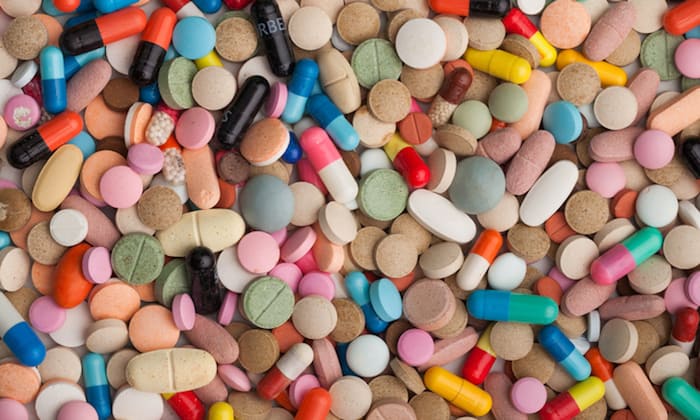In the U.S., 114 people die from drug overdose-related cases every day. These alarming statistics offer a solution to the detrimental drug usage problem, which is substance medical detox.
Addiction is one of the top problems facing society today requires rigid solutions to curb its persistence. Detox plans offer a comprehensive supervised environment that aims at providing safe spaces for substance abuse addicts to experience havens for recovery and well being.
When deciding to quit the reliance on addictive processes, enrolling in a detox program is required for supervised detox. These centers offer inpatient and outpatient services for individuals, which lessen the risk of dangerous withdrawal symptoms as there are available round the clock physicians to aid the process. For instance, severe addictions require close monitoring due to withdrawal complications. These withdrawal symptoms can be fatal if the patient is left unsupervised. Most addicts experience fatigue, nausea, seizures, depression, anxiety, and muscle cramps.
Medical detox uses medications to stop the signs of withdrawal. This method of detoxification is used widely and recommended in severe addiction cases. However, this detox is given to a patient depending on:
- Intensity of addiction
- Duration of addiction
- Type of addiction
- Age of patient
- Method of drug use
As different drugs exhibit different withdrawal symptoms, the detox processes for some hard drugs elicit harsh reactions that affect the patient’s physical and mental health. For instance, opiates are the most uncomfortable to detox from, while alcohol and benzodiazepines are the most dangerous and fatal to detox from as patients exhibit physical symptoms such as seizures. Cocaine’s withdrawal symptoms can last for a month, with the effects being hazardous to the patient. On the other hand, Amphetamines affect the nervous system, thereby leading to unstable brain activity during withdrawal.
Deciding to self-detox can be harmful to addicts, primarily from alcohol or some benzodiazepines. These substances are often too dangerous to stop cold turkey and require medical aided detox processes, as physicians ensure all due procedures are followed.
Detoxification process
When a patient chooses to undergo a medical detox plan, at a place such as detox treatment in Texas, the physician performs several tests to determine specific factors that might help gauge the medication’s concentration. For instance, blood tests are taken to identify the number of drugs in the patient’s system. The patient’s genetic, psychiatric, and mental history is also reviewed. An elaborate plan for the patient’s nutritional, emotional, and medicinal needs is also laid out.
After evaluation, the patient is then stabilized through medications or psychological therapy. This seeks to protect the patient from any harm from withdrawals. Physicians also administer treatment medications to reduce complications of withdrawal symptoms.
Preparation for the detox process is the next step where the patient is briefed on what to expect during the detoxification process. The physician also explains the effects and recovery process to the patient.
Detox medications
Physicians use different medications for different addictions, which are categorized depending on the withdrawal effects of the drug used. However, physicians need to offer transitionary and non-addictive medications to patients to prevent over-reliance on the medication. Some medications that are used at detox centers include:
- Antidepressants
Physicians prescribe antidepressants for most patients with drug and substance abuse to relieve feelings of depression. Since addicts rely on drugs to induce happiness, the happy hormones found in their brains do not automatically kick in. Therefore, antidepressants mitigate depressive feelings until the body can naturally produce happy hormones.
- Sedatives
The use of sedatives in medical detox aids the patient to sleep through their withdrawals. Alcohol and opiates cause anxiety and irritability; therefore, placing a patient under sedation helps alleviate their symptoms. Solutions to sedations comprise of various techniques which are carefully used by physicians. For instance, rapid detox under sedation offers fast and immediate detox plans preventing the uncomfortable withdrawal symptoms.
Additional medications for opiate addiction include methadone, naltrexone, or suboxone, which suppress cravings by activating brain receptors.
New trends in detox treatment
In this new age of holistic and inclusive medications, hospitals embrace numerous services that a patient can embrace, which offers therapy options, from the detox process to aftercare and counseling services. The detox center’s goal is to ascertain that the patient’s quality of life is much improved after the medical detox. Therefore, inclusive treatment options and therapies seek to offer personalized experiences for each patient providing the best benefits to them.
Some ways physicians are advancing medical detox treatments is by:
- Incorporating clinical treatments with holistic and homeopathic methods of treatment to supplement and expand on treatment options
- Training the patient on whole life improvement to ensure their quality of life is better than before to improve recovery and health outcomes
- Customization of detox treatments for a personalized experience
- Technology tracking of patients for accountability
The Editorial Team at Healthcare Business Today is made up of skilled healthcare writers and experts, led by our managing editor, Daniel Casciato, who has over 25 years of experience in healthcare writing. Since 1998, we have produced compelling and informative content for numerous publications, establishing ourselves as a trusted resource for health and wellness information. We offer readers access to fresh health, medicine, science, and technology developments and the latest in patient news, emphasizing how these developments affect our lives.








